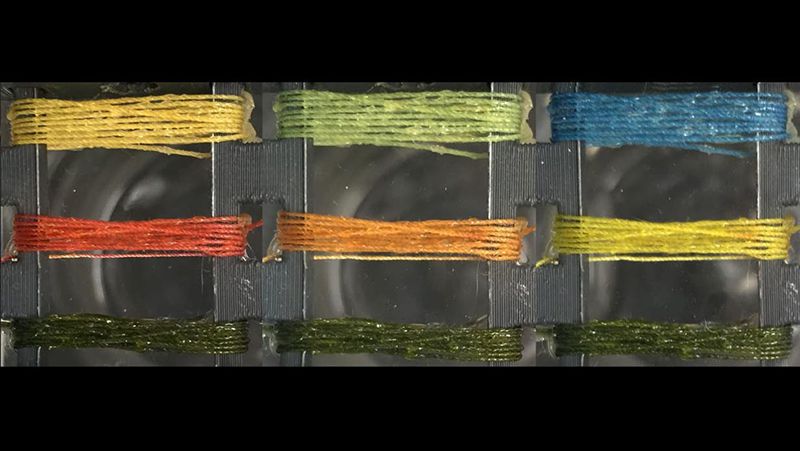ART NEWS
Clothing May Soon Be Able to Change Color in the Presence of Harmful Gases | Innovation
[ad_1]
Until more recently than you might think—the mid-1980s—miners used caged canaries as an early-warning system for carbon monoxide. The birds are ultra-sensitive to the effects of toxic gases, so when one would keel over the miners knew it was time to get fresh air. Canaries were ultimately replaced by more humane technology—digital sensors similar to the carbon monoxide detectors many of us now have in our homes.
But imagine if, instead, miners—or soldiers, or rescue workers—could simply put on a shirt that would change color in the presence of dangerous gas.
That’s the technology currently being developed at Tufts University, where researchers have created dyed threads that change color in the presence of carbon monoxide and other hazards. They hope the threads can eventually be woven into smart clothing to benefit workers in a variety of fields. This clothing could potentially be even more affordable and easy to use than current methods of gas detection, researchers says.
“We wanted to develop a solution for environmental monitoring, where you didn’t have to remember to bring the sensor with you,” says Rachel Owyeung, a graduate student in chemical and biological engineering at Tufts. “With our gas sensing washable threads, the sensor can be embedded into something you would already be wearing, such as a shirt.”
Owyeung was lead author of a paper about the technology, recently published in the journal Scientific Reports.
The researchers studied three kinds of dye: MnTPP, methyl red and bromothymol blue. MnTPP and bromothymol blue detect ammonia, while methyl red detects hydrogen chloride, both of which can harm the eyes, skin and respiratory tract. They used a special process to bind the dye to the thread by treating it with acetic acid, which makes the thread coarser and allows for a firmer attachment. They then applied a polymer to the thread to create a water-repellent seal. This way, the resulting garment can be washed without the dye leaching out.
The color change that happens when the threads are exposed to gas can be seen by the naked eye, or with a smartphone camera. The camera allows for even more sensitive detection, reading subtle color changes occurring when dangerous substances are as low as 50 parts per million.
Clothing or materials made from the color-change threads could have a wide variety of applications. It could be used by workers who deal with cleaning supplies, fertilizers or chemical manufacturing, materials that can all emit dangerous gases. It could help military personnel avoid chemical weapons. It could even be used underwater—the gas sensors are stable in water, allowing them to detect dissolved gases. This could be useful in the oil and gas exploration industry. It could also potentially have medical uses, by detecting gas levels in blood or other biological fluids as a way of diagnosing diseases. The team hopes gas-detection clothing could be especially useful in low-resource environments, where workers might not have access to or training on digital devices.
“My favorite application, as someone who works in a research laboratory everyday, is embedding our threads in lab coats,” Owyeung says. “I am required to wear the lab coat at all times, and if the patch in my lab coat were to change color, I would know that there are some volatile compounds in my work area. This grants me real-time monitoring of my immediate area, so it can speed up my response time to ensure my safety and the safety of others.”
The team’s next steps will be to further investigate how they might use the threads to detect dissolved gases in water.
“The application of pH sensitive dyes to textiles is not new, but the authors’ specific application—gas detection—seems new to me, and is interesting,” says Harold Freeman, a professor of textile chemistry at North Carolina State University.
Freeman says the technology fits in with current research on electronic textiles with embedded sensors to monitor bodily functions.
“It seems logical to extend the present technology to the detection of harmful atmospheric gases,” he says.
Canaries everywhere are certain to approve.
Like this article?
SIGN UP for our newsletter
[ad_2]
Source link











